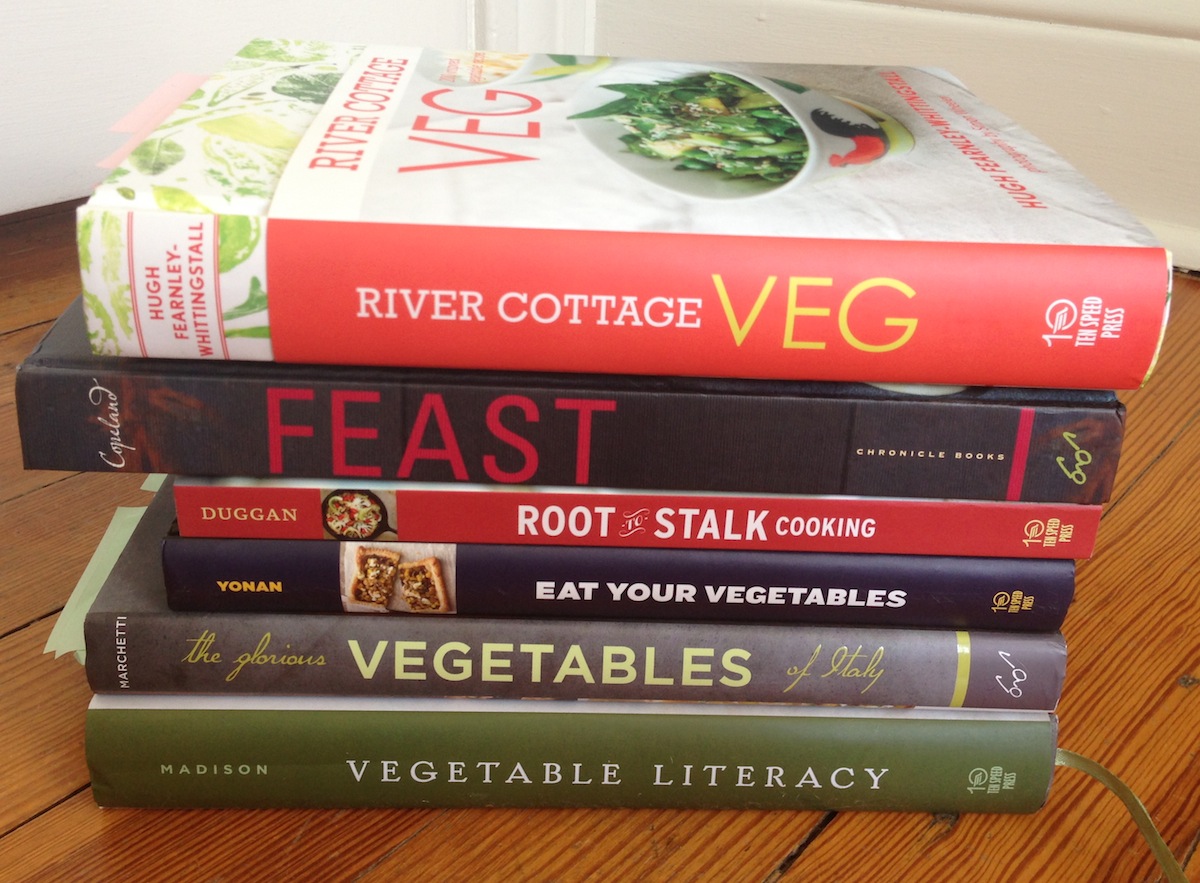The Local newsletter is your free, daily guide to life in Colorado. For locals, by locals.
“We live in an era of vegetable obsessiveness,” writes Tara Duggan in her 2013 cookbook Root-to-Stalk Cooking. “Vegetarianism, or the tendency towards it, has been growing slowly but surely in the United States,” says Joe Yonan in his newest title, Eat Your Vegetables. And yet, despite the emphasis on putting more and more vegetables on our plates, “vegetarians have not been as richly served in the cookbook market as they deserve,” writes Hugh Fearnley-Whittingstall in the just-published River Cottage Veg.
It seems cookbook publishers all got the memo. 2013 wasn’t just the year of the vegetable, it was also the year of the vegetable cookbook.

Whether you’re shopping for a trend-driven foodie, or you’re looking for a gift that might inspire a New Year’s resolution, here’s a rundown of recently-released vegetable titles for the cook on your list.
Eat Your Vegetables: Bold Recipes for the Single Cook, Joe Yonan ($25)
Eat Your Vegetables is perfect for the vegetarian who is suddenly single or, as Yonan writes, the “lone vegetarian in a meat-eating household.” Filled with useful tips such as how to best store the unused half of an avocado and the benefits of massaging kale, Yonan’s book includes recipes that will quickly become familiar go-tos, like an oyster mushroom and corn tart. This is just the kind of one-piece meal that makes the omnivores among us focus on “what’s on the plate rather than what’s missing.” Between recipes, the Washington Post food and travel editor includes thoughtful essays (“Should We Stop Mocking Mock Meat”), as well as a practical chapter on ways to take advantage of the fridge, freezer, or pantry.
Feast, Sarah Copeland ($35)
Feast is the 2013 vegetable title for the health-nut on your list. In her comprehensive cookbook (there’s a chapter dedicated to breakfast, and another on desserts) Sarah Copeland includes notes about the nutritional value of certain choices and recipes for items like a kale shake and green tea granola bars. She draws on an impressive number of cultures for the recipes, including her Hungarian roots. However, be forewarned that some ingredients, like Hungarian peppers and hot Hungarian paprika from once recipe for lecsó alone, can be difficult to find. Copeland is a former food stylist, and the photos (shot by Yunhee Kim) are stunning.
The Glorious Vegetables of Italy, Domenica Marchetti ($30)
Nearly every book on this list references the important place vegetables have on the Italian table, so it is only fitting that there’s a title dedicated to just that. In a book where clams, chicken thighs, and lamb make an appearance, Domenica Marchetti’s vegetable-forward the Glorious Vegetables of Italy is perfect for those who tend to keep an Italian pantry (crushed red pepper, garlic, olive oil) and might be less inclined to run across town to pick up fish sauce. If you can overlook moments where the author pedantically tells us what to do with tongs, a whisk, and spatulas, her recipes—many of them family treasures—are delicious. A foolproof mash of boiled green beans and Yukon Golds gives new life to potatoes, and is the perfect way to enjoy a green vegetable that had travelled too far during the winter months.
River Cottage Veg, Hugh Fearnley-Whittingstall ($35)
A bit shorter on technique than some of the other titles here, River Cottage Veg is a stellar resource for the avid home cook who is considering a lifestyle change. In the seventh title from England’s River Cottage farm, Fearnley-Whittingstall, a self-described “selective omnivore” who was, until recently, a “notorious carnivore,” gives readers more than 200 unpretentious, everyday ideas that celebrate his new preferred food group. This sure-favorite book is artfully designed and entertainingly written with that sharp wit only a British author can provide.
Root-to-Stalk Cooking, Tara Duggan ($22)
Root-to-Stalk Cooking is not for the superstore shopper who loves prefab carrots and salad kits, but for the home gardener or farmers’ market addict on your list. In it, Duggan, a food writer for the San Francisco Chronicle, offers ideas for what to do with the leaves, stalks, skins, and fronds of vegetables—scraps she dubs the “flotsam and jetsam of a produce lover’s cooking life.” The well vetted recipes are not only an effort to reduce one’s carbon footprint, they are also tasty. (My family recently devoured her Carrot Top Salsa Verde). Duggan’s book is more “plant-based” than it is strictly vegetarian, and it’s a must-have for that friend who is always bragging about what he or she just made from the CSA box.
Vegetable Literacy, Deborah Madison ($40)
Long an authority on vegetable cookery, Deborah Madison has just published another must-have, especially for the reference book dorks and home gardeners on your list. Grouped first by family (cabbage), then by vegetable (arugula, bok choy, broccoli, broccoli rabe…), I can see myself turning to Vegetable Literacy during the growing season as often as I open Chez Panisse Vegetables by Alice Waters. In the 400-page compendium, Madison is equally committed to historical data, growing information, species types, preparation tips, and inventive recipes.
In addition to vegetables, one thing these titles share is a refreshingly gentle, non-preachy tone. “It’s not my mission to convince people to change their minds about what they don’t like…but…to introduce a vegetable to someone who has never had it and is willing to give it a try,” Madison writes of Jerusalem artichokes. In short, all of these books will appeal to omnivores and vegetarians alike. And as their astute authors understand, they need not be given with a sermon about how we all need more color on our plates. The photos and recipes will make that argument for us.
Follow Stacey Brugeman on Facebook, Instagram, and Twitter @denveromnivore.








